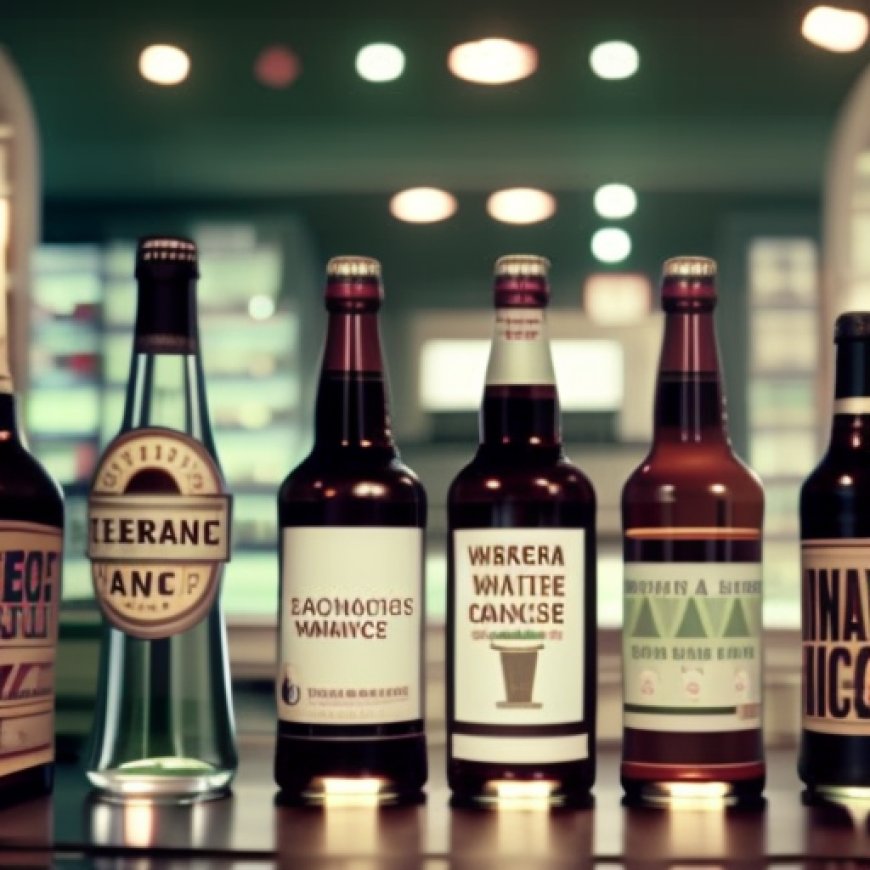Should Alcoholic Beverages Have Cancer Warning Labels?
Should Alcoholic Beverages Have Cancer Warning Labels? The New York Times


Fifteen words are roiling the global alcohol industry.
Beginning in 2026, containers of beer, wine and liquor sold in Ireland will be required by law to bear a label in red capital letters with two warnings: “THERE IS A DIRECT LINK BETWEEN ALCOHOL AND FATAL CANCERS” and “DRINKING ALCOHOL CAUSES LIVER DISEASE.”
The requirement, signed into law last year, is backed by decades of scientific research and goes much further than any country has thus far communicated the health risks of alcohol consumption. It has sparked fierce opposition from alcohol businesses worldwide, but it is also inspiring a push in some other countries to pursue similar measures.
“It’s an important step,” said Dr. Timothy Naimi, the director of the Canadian Institute for Substance Use Research at the University of Victoria. “People who drink should have the right to know basic information about alcohol, just as they do for other food and beverage products.”
In Thailand, the government is in the final stages of drafting a regulation requiring alcohol products to carry graphic images accompanied by text warnings such as “alcoholic beverages can cause cancer.”
A bill has been introduced in the Canadian Parliament that would require labels on all alcoholic beverages to communicate a “direct causal link between alcohol consumption and the development of fatal cancers.”
Last week, the Alaska State Legislature held a committee hearing on a bill that would require businesses selling alcohol to post signs carrying a cancer warning.
SDGs, Targets, and Indicators
-
SDGs Addressed or Connected to the Issues
- SDG 3: Good Health and Well-being
- SDG 12: Responsible Consumption and Production
-
Specific Targets Based on the Article’s Content
- Target 3.5: Strengthen the prevention and treatment of substance abuse, including narcotic drug abuse and harmful use of alcohol
- Target 12.8: Ensure that people everywhere have the relevant information and awareness for sustainable development and lifestyles in harmony with nature
-
Indicators Mentioned or Implied in the Article
- Indicator 3.5.1: Coverage of treatment interventions (pharmacological, psychosocial, and rehabilitation and aftercare services) for substance use disorders
- Indicator 12.8.1: Extent to which (i) global citizenship education and (ii) education for sustainable development (including climate change education) are mainstreamed in (a) national education policies; (b) curricula; (c) teacher education; and (d) student assessment
Table: SDGs, Targets, and Indicators
| SDGs | Targets | Indicators |
|---|---|---|
| SDG 3: Good Health and Well-being | Target 3.5: Strengthen the prevention and treatment of substance abuse, including narcotic drug abuse and harmful use of alcohol | Indicator 3.5.1: Coverage of treatment interventions (pharmacological, psychosocial, and rehabilitation and aftercare services) for substance use disorders |
| SDG 12: Responsible Consumption and Production | Target 12.8: Ensure that people everywhere have the relevant information and awareness for sustainable development and lifestyles in harmony with nature | Indicator 12.8.1: Extent to which (i) global citizenship education and (ii) education for sustainable development (including climate change education) are mainstreamed in (a) national education policies; (b) curricula; (c) teacher education; and (d) student assessment |
Analysis
The article addresses or connects to two Sustainable Development Goals (SDGs): SDG 3: Good Health and Well-being, and SDG 12: Responsible Consumption and Production.
Based on the article’s content, specific targets can be identified:
- Target 3.5: Strengthen the prevention and treatment of substance abuse, including narcotic drug abuse and harmful use of alcohol.
- Target 12.8: Ensure that people everywhere have the relevant information and awareness for sustainable development and lifestyles in harmony with nature.
The article mentions or implies two indicators:
- Indicator 3.5.1: Coverage of treatment interventions (pharmacological, psychosocial, and rehabilitation and aftercare services) for substance use disorders.
- Indicator 12.8.1: Extent to which (i) global citizenship education and (ii) education for sustainable development (including climate change education) are mainstreamed in (a) national education policies; (b) curricula; (c) teacher education; and (d) student assessment.
Overall, the article highlights the importance of providing accurate information about the health risks of alcohol consumption and promoting responsible consumption to improve public health and well-being. It also emphasizes the need for education and awareness to support sustainable development and lifestyles in harmony with nature.
Behold! This splendid article springs forth from the wellspring of knowledge, shaped by a wondrous proprietary AI technology that delved into a vast ocean of data, illuminating the path towards the Sustainable Development Goals. Remember that all rights are reserved by SDG Investors LLC, empowering us to champion progress together.
Source: nytimes.com

Join us, as fellow seekers of change, on a transformative journey at https://sdgtalks.ai/welcome, where you can become a member and actively contribute to shaping a brighter future.







